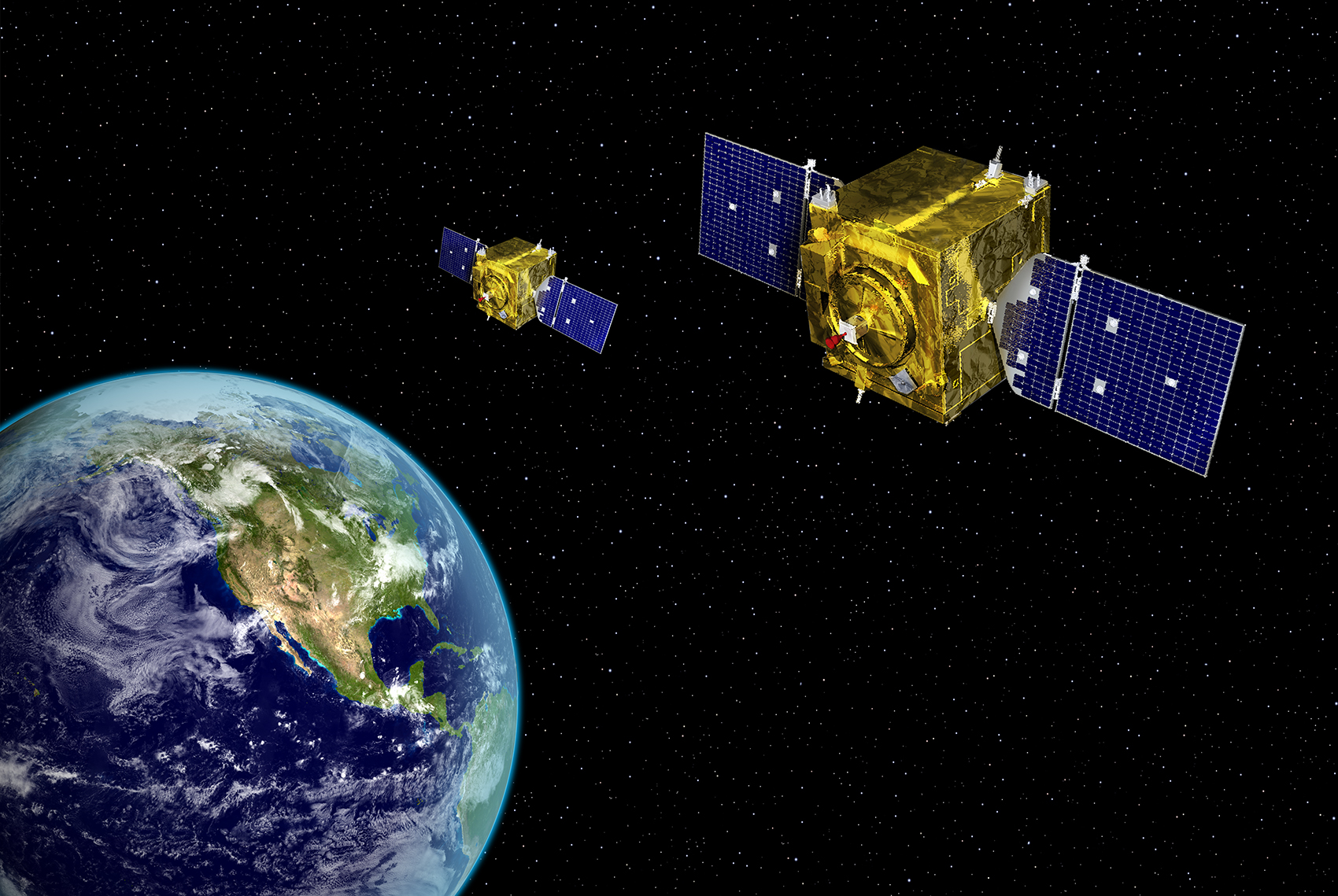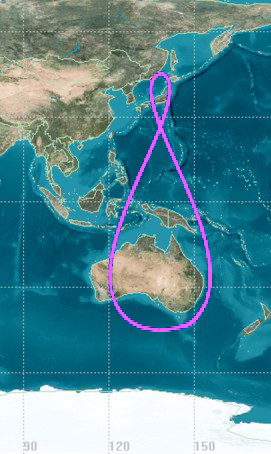US, Japan To Ink Hosted Payload Pact to Monitor Sats
Posted on
 WASHINGTON: The United States and Japan plan to sign a significant new agreement to place American space monitoring payloads on Japanese satellites for the first time, according to US defense officials. The US space situational awareness (SSA) sensors will hitch a ride on Japan’s regional equivalent of GPS.
WASHINGTON: The United States and Japan plan to sign a significant new agreement to place American space monitoring payloads on Japanese satellites for the first time, according to US defense officials. The US space situational awareness (SSA) sensors will hitch a ride on Japan’s regional equivalent of GPS.
Both the US and Japan in recent years have become increasingly concerned about on-orbit testing by China and Russia of maneuverable satellites that, while also having peaceful uses such as satellite servicing, eventually could be designed to attack allied satellites.
Working within the Pentagon’s larger space policy, the Air Force is “pursuing an opportunity for Japan to host a Space Situational Awareness (SSA) sensor payload on their QZSS space vehicles,” Maj. Will Russell, Air Force spokesman, confirmed.

The coverage of Japan’s QZSS positioning, navigation and timing satellite constellation.
The Quazi-Zenith Satellite System comprises four satellites providing positioning, navigation and timing (PNT) signals to users in Asia. One satellite is in Geostationary Orbit (GEO) and three are in highly elliptical orbits.
The joint effort is aimed at expanding the orbital view of the US Space Surveillance Network (SSN) by providing observation data on satellites and space debris in a region now under-covered by US radar and telescopes.
Japan for the past 15 years has been working to develop a modern SSA system of its own, building a new radar facility for monitoring Low Earth Orbit (LEO) at Kamisaibara Space Guard Center (KSGC) and refurbishing a telescope for deep space monitoring at Bisei Space Guard Center.
Under the planned MOU, the US payloads would be orbited in 2023, as Japan replaces its current constellation. In addition, the MOU will cover the sharing of data from Japan’s SSA system.
A DoD official explained: “The US and Japan already have an unclassified space situational awareness sharing agreement through STRATCOM (Strategic Command) that was signed in 2013 and we’re working through the stages of planning for an operational MOU for PNT, and a classified SSA data sharing agreement.”
The US also is working with Australia on joint SSA observations and data sharing, planning to move the Space Surveillance Telescope, currently located at White Sands, to the Harold E. Holt Naval Communications Station in Western Australia by 2021. The US is also considering putting one of the Ground-based Electro-Optical Deep Space Surveillance (GEODSS) network of telescopes in Australia. The powerful 1-meter telescopes can see objects the size of a basketball out to 40,000 kilometers.
Speaking Thursday at the Center for Strategic and International Studies in Washington, Gen. Koji Yamazaki, chief of the Joint Staff for Japan’s Self-Defense Forces, underscored the increased US/Japan cooperation in space. “It is important for Japan and the United States to make progress in information sharing, and share functions for the use of satellites for information collection, communication, positioning and early warning capabilities,” he said. He added that the rise of China, and continued threats from North Korea make the Pacific region more unstable and unpredictable than it had been in the past.
American and Japanese officials are expected to sign a Memorandum of Understanding on the new hosted payloads by the end of the calendar year, one official said. Russell added that it is expected to come no later than the first quarter of 2020.
The news comes as Defense Secretary Mark Esper is en route to Japan, where he’s slated to meet Defense Minister Takeshi Iwaya next week, part of a trip that also takes him to South Korea, Australia, and New Zealand.
At an event Thursday evening at the Japanese Ambassador’s residence here, attended by dozens of military officials and diplomats from both nations, Gen. John Raymond, commander of Air Force Space Command and the new leader of the brand-new Space Command, praised the closer relationship the US and Japan have forged in space.
The general said that the QZSS work “will provide great utility for both of us,” adding “that’s a great pathfinder for developing this cooperation in space between our two countries. The area I would like to take the next step on is partnering with respect to radars, including the new Japanese deep space radar” Tokyo is developing.
Raymond added that he plans to spread his Space Command troops out across the globe, to make sure US military commanders around the world know how to use the assets he’s controlling. “We’re gonna stand up integrated planning elements that will be embedded forward in INDO-PACOM and EUCOM and other combatant commands that will allow us to synchronize our planning,” he said. “There is an absolute requirement to plan together.”
Some of the fretting over keeping everyone on the same page was underscored earlier in the day when Maj. Gen. Mark Wise, deputy commander of Marine Corps Combat Development Command, told reporters at the Pentagon that in future operations in the Pacific region, “I’m really concerned about our ability to [communicate] in this comms degraded environment,” given Chinese abilities to jam communications links and intel feeds.
In addition to the new MOU, Japan is considering setting up a separate Space Command along the lines of the new Pentagon Space Command, according to a Japanese military officer. The goal would be to expand the already-planned Space Domain Mission Unit assigned with space situational awareness operations.
Japan has over the past several years developed ambitious plans regarding increasing its military space capabilities. Tokyo’s December 2018 National Defense Program commits Tokyo to a significant effort to develop a “Multi-Domain Defense Force that organically fuses capabilities in all domains including space, cyberspace and electromagnetic spectrum.”
The companion “Medium Term Defense Program 2019 – 2023” calls for a new unit to “conduct persistent monitoring of situations in space, and to ensure superiority in use of space at all stages from peacetime to armed contingencies.”
The Japanese press reported in May that the new unit will be operational by 2022 at the Fuchu ASDF base in Western Tokyo, with the Japanese Ministry of Defense having slated 100 billets to launch operations. Further, Japan has plans to send liaison officers to Vandenberg AFB with the US Multinational Space Collaboration Office set up in 2018.
Lt. Gen. David Thompson, Vice Commander of Air Force Space Command (AFSPC), told the Senate Armed Services Committee in March that AFSPC is working on the memorandum of understanding that would open the door to Japanese officers at Vandenberg.
Subscribe to our newsletter
Promotions, new products and sales. Directly to your inbox.
